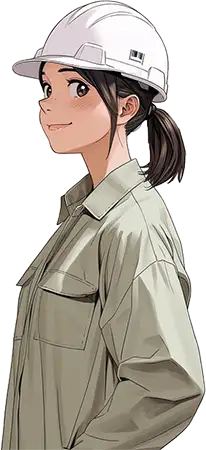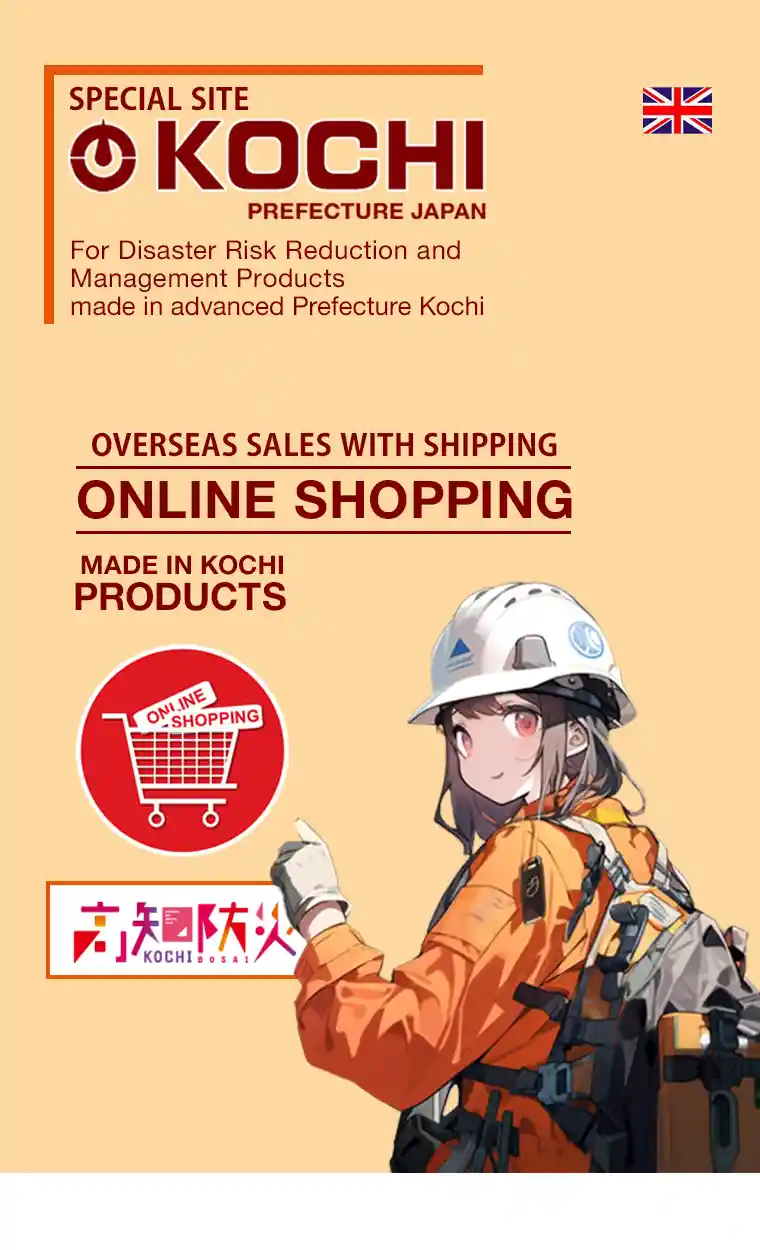
Disaster prevention products
from Kochi
Prefecture companies sold overseas.
<< Shopping cart is available for international shipping >>
”Exceptional disaster risk reduction and management products born from disaster experience”
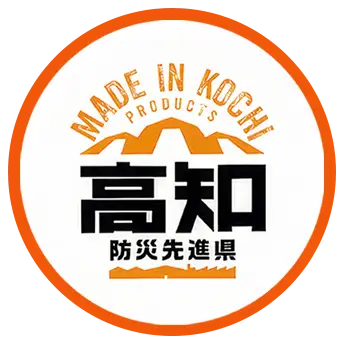
From past experiences of numerous large-scale natural disasters, disaster risk reduction management and mitigation related products developed by companies in Kochi are available for purchase both domestically and internationally through online shopping carts.


Products purchased from overseas will be delivered
to
over 120 countries around the world via EMS !
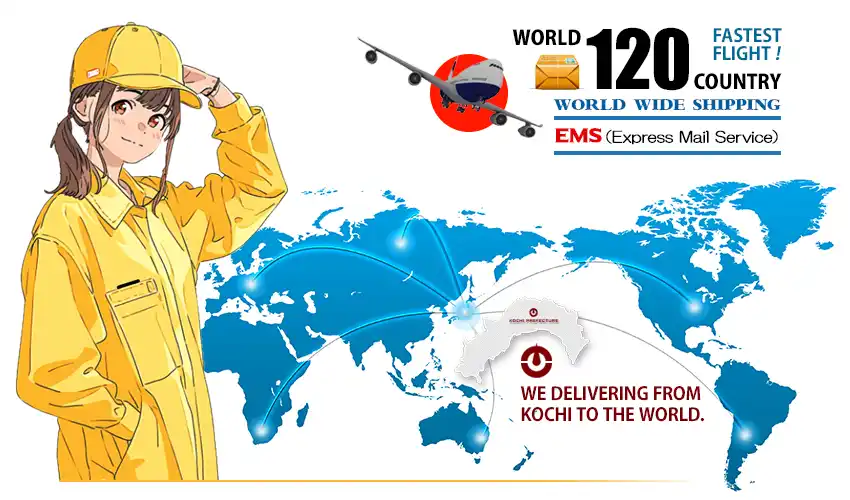
WHAT IS EMS(Express Mail Service) ...
EMS is the fastest international mail service for sending parcels of up to approximately 30 kg(*) in a simple, convenient, and safe manner to over 120 countries and territories worldwide. It is the fastest air delivery service. This service is characterized by its fast delivery - equivalent to or faster than express mails - and having a compensation system for damaged parcels. The deliveries are recorded and managed by barcode labels that can be tracked from overseas using a computer or a mobile device. Since EMS gives priority to cargo transportation, they are able to deliver items to many areas of the world usually within 2-10 days, meaning the parcels will arrive a few days to a week faster than regular air cargo. EMS has restrictions on the weight and size of the parcel that can be shipped in one package. (*These restrictions may differ depending on the destination.)

The products listed below can be purchased from overseas/domestic sales "JB (JAPAN-BOSAI) SHOP".
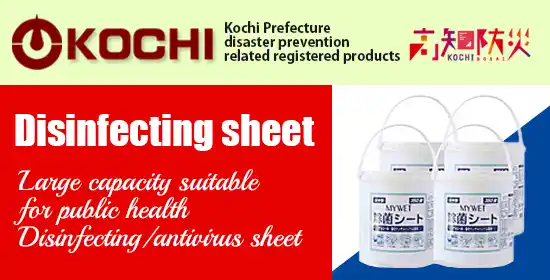
MY WET Sanitization sheet
SANSHO SHIGYO CO.,LTD
Easy to use with large capacity! Sanitizing and antiviral sheet suitable for public hygiene
(contains active ingredients for COVID-19)
This is a large-volume disinfectant sheet suitable for public hygiene. You can quickly take ...
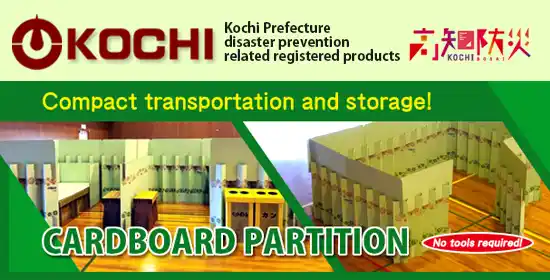
Cardboard Partition
TAKENAKA GROUPE CORPORATION
Compact transportation and storage! No tools required! Double-sided water repellent! Can be used for a long time!
How to assemble: Each part is inserted and can be assembled without adhesive tape or tools. Moisture resistance: Both the
product and the outer box are water-repellent on both ...
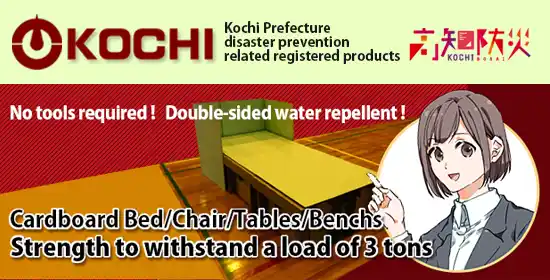
Cardboard Bed/Chair/Tables/Benchs
TAKENAKA GROUPE CORPORATION
Compact transportation and storage! No tools required! Double-sided water repellent! Can be used for a long time!
How to assemble: Each part is inserted and can be assembled without adhesive tape or tools. Moisture resistance: Both the
product and the outer box are water-repellent on both ...
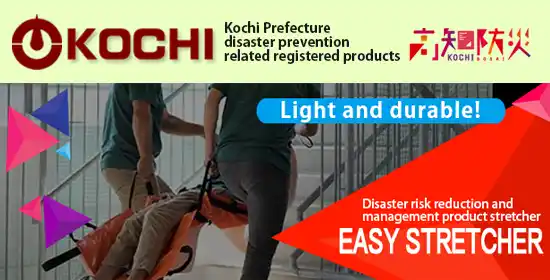
Easy Stretcher
YOSHIMURA DENSO CO., LTD.
Emergency disaster risk reduction and management product stretcher Easy Stretcher. Light and durable! "Disaster risk
reduction and management product stretcher" that can be easily transported by women and the elderly.
Capable of transporting even with limited manpower ...
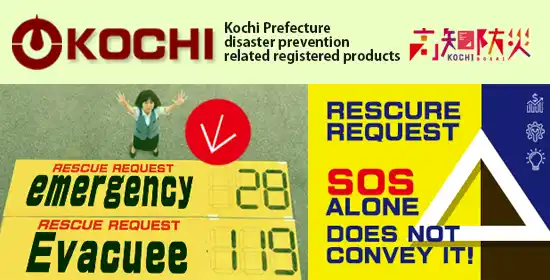
Stitch Type RESCURE REQUEST
SEKI CO., LTD.
A sheet that accurately conveys the information necessary for relief to the sky and far away.
Depending on the evacuation site and the scale of the disaster, communication with the outside world may become impossible or
information may not be ...
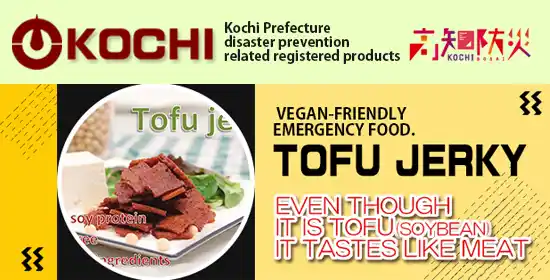
TOFU (soybean) Jerky
TANAKA SHOKU CO., LTD.
"Tofu," a Japanese health food (the main ingredient is soybeans only), is processed into a gluten-free, delicious jerky flavor. Tofu jerky can be enjoyed by anyone, anytime, anywhere, and can be stored for a long time. Tofu Jerky is Japanese new reserve food and emergency food. From Kochi, we deliver it ...
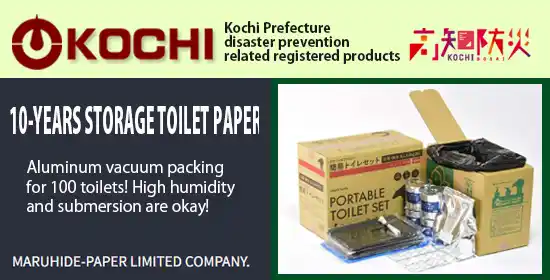
Clean's Family
toilet paper & simple toilet
MARUHIDE-PAPER LIMITED COMPANY.
10-year storage toilet paper & simple toilet.
<< Out of stock now>>
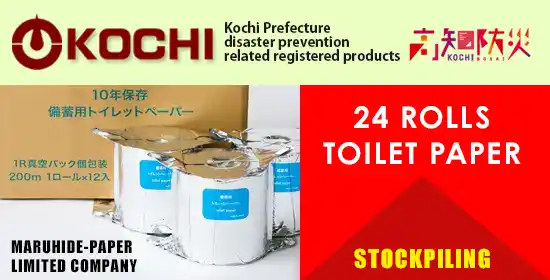
24 rolls of toilet paper for stockpiling
MARUHIDE-PAPER LIMITED COMPANY.
10 year warranty. Vacuum pack 200m per roll. High humidity and submersion are okay! (Quantity: 24)
Every time a disaster notice such as a typhoon is issued, or an earthquake damage occurs toilet papers are bought up those
areas and is not distributed to those who ...

ABOUT JB SHOP ( JAPAN BOSAI SHOP )
"Disaster prevention" is a language and concept unique to Japan. Preparation, response in the event of a disaster, and recovery are all summarized in two words: "disaster prevention". And "disaster prevention" is spreading around the world as "BOSAI", which is literally translated into Japanese.
JB SHOP conveys the meaning of preparing for disasters and the value of safe and secure products, as well as disaster prevention related products that protect and save lives. By accessing JB SHOP, you can easily obtain Japanese disaster prevention products from anywhere in the world.
The shopping site differs depending on whether the product is delivered domestically or overseas.
① Domestic delivery (Japanese) : This is a regular shopping page exclusively for delivery by courier to domestic residents. (Note) Items purchased from here cannot be shipped overseas.
② Overseas delivery (English) : This is a shopping page exclusively for overseas shipping. Products purchased from here are a shopping page exclusively for overseas shipping from Japan to the destination (country of residence).
Link to "JB SHOP" TOP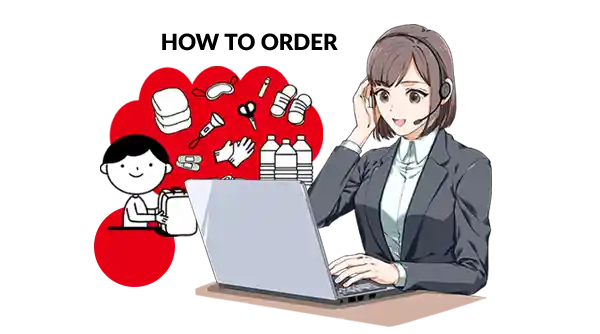
HOW TO ORDER
Payment in the shopping cart consists of (1) paying for the item, and (2) paying for the international shipping fee. Overseas users can complete overseas shopping from Japan by completing a series of operations just like shopping in their own country (shipping fees are not included). (Automatically calculated depending on the recipient country).
JB SHOP's overseas sales system does not require you to do the work twice like general overseas sales systems. (In a typical overseas sales system, after confirming payment for the product, you are billed again for the overseas shipping fee, and then you wait for the shipping fee to be paid before shipping overseas, which creates a two-way timelag.)
ABOUT ORDER
Payment for your purchase will be processed in Japanese Yen (JPY).
・ International users pay in their home currency. Product prices are automatically converted into Japanese yen using real-time exchange rates.
・ Payment with Paypal : Payment can be made with PayPal, which is safe and does not require you to enter your credit card number.
・ For all overseas shipments, we use the
fastest airmail service,
EMS : Overseas shipments are carried out by
an overseas shipping distribution center that specializes in overseas shipments, so we can deliver them to
the destination country smoothly and quickly.
Overseas users can track their packages from My Page.
Overview of Kochi Prefecture
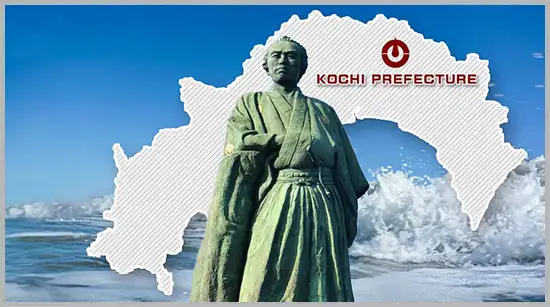
Kochi Prefecture is one of the prefectures of Japan that occupies the southern half of Shikoku, which is the fourth largest island among the four major islands that make up Japan.
It is located at 133 ° east longitude and 33 ° north latitude. Since mountains with an altitude of 1,000 m or more are connected to the vicinity of the coast, the plains are only scattered in the lower reaches of the river, and about 84% of the area is mountainous.
While blessed with abundant nature, sea, mountains and rivers in each season, there are many natural phenomena and daily life.
Terrestrial phenomenon of Kochi prefecture
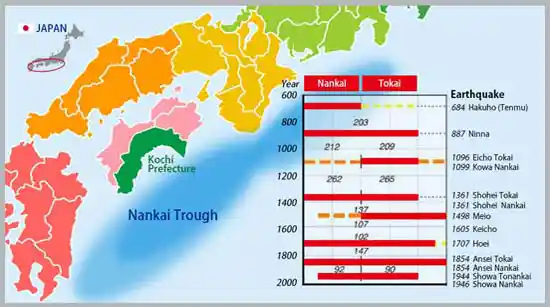
There is a Nankai Trough off the coast of Kochi Prefecture at a depth of 4000 m, which causes a huge earthquake with a magnitude of over 8 in a cycle of about 100 years.
The earthquake along the Nankai Trough caused not only a big tremor but also a big tsunami, which hit Kochi many times.
Meteorological condition of Kochi prefecture
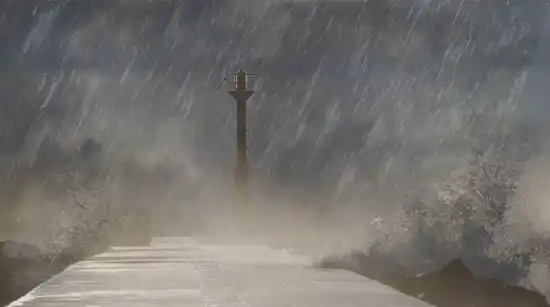
Kochi Prefecture faces the Pacific Ocean, where the warm Kuroshio current flows in the south, and is surrounded by the Shikoku Mountains at an altitude of 1,500 to 2,000 m in the north. Due to these topographical conditions, it has become a perfect place to accept humid oceanic air currents, and the annual rainfall exceeds 2,000 mm in the entire prefecture, and in some areas it exceeds 4,000 mm, making it one of the most rainy areas in Japan and the world. In particular, typhoons have landed the second highest number of landings in all prefectures nationwide since the start of observation in Japan, and can be said to be a regular area every year. On the other hand, the annual sunshine hours are also ranked high among all prefectures in Japan every year, and it can be said that it is characterized by heavy rain, fine weather, and a clear weather environment.
Showa Nankai Earthquake
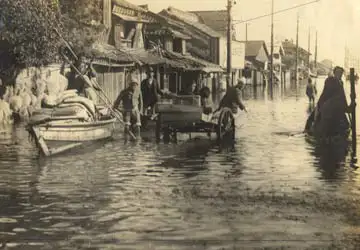
PHOTO: Provided by kochi City
Off the coast of Kochi Prefecture, trench earthquakes occur with a cycle of about 100 years. Most recently, it occurred
on
December 21, 1946 at 4:19 am. The magnitude of the earthquake was 8.0, and a tsunami of 4m to 6m rushed to the coast of
Kochi prefecture.
679 people were casualty, 1,836 people were injured, and 4,846 homes were completely destroyed or washed away due to the
great shaking and tsunami caused by this earthquake.
In addition, this earthquake caused subsidence mainly in the central part of the prefecture and the prefecture capital
City
of Kochi, submerged area by tsunami ware not drainaged long duration, and long-term inundation also occurred.
The disaster in second straight year 1975 and 1976
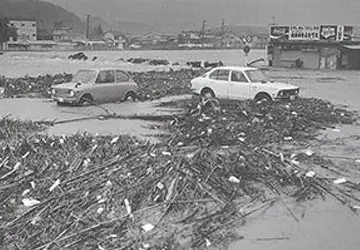
The typhoons that struck in 1975 and 1976 for two consecutive years caused the greatest damage to Kochi in recent years. The typhoon of 1975 recorded 700 mm of precipitation in one day, causing sediment-related disasters and flooding of rivers in the prefecture. There were 77 casualty.
The typhoon of 1976 caused rain of 1305 mm in five days until the typhoon passed, causing flood damage over a wide area of Kochi City, the prefecture's capital. This typhoon caused damage not only in Kochi but also in a wide area of Japan.
Torrential Rains in 1998
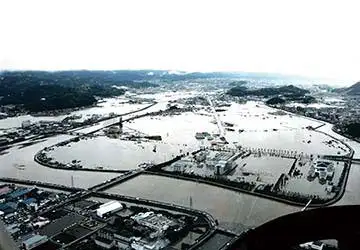
In September 1998, strong rain occurred mainly in the central part of the prefecture. At the observation points in the prefecture, a maximum of 943 mm of rain was recorded for 24 hours.
The heavy rain caused enormous damage, including number of houses 25 completely destroyed and 8,341 flooded above floor level.
In the downtown area of Kochi City, it rained as much as 124 mm in an hour, and the city was covered with water in an instant.
A Disaster will able to be a Phenomenon
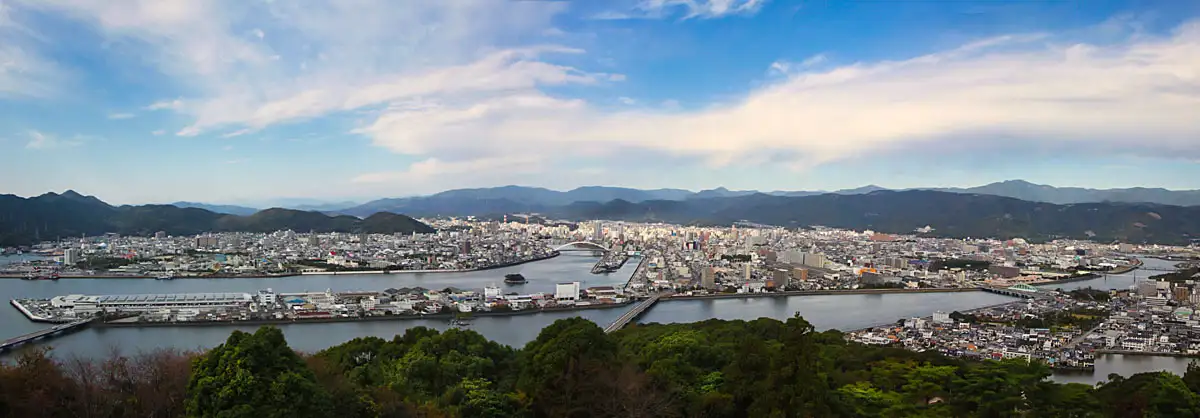
Build Back Better
Every time a storm or flood damage occurred, the national government, prefectures, and municipalities have cooperated to carry out restoration and reconstruction projects to prevent disasters again.
Kochi City has excellent ability to cope with heavy rain, and has one of the best drainage capacity in Japan at 77 mm / hour. Even if heavy rains occur at the level that caused a major disaster in the past, the same "disaster" will not occur in Kochi.
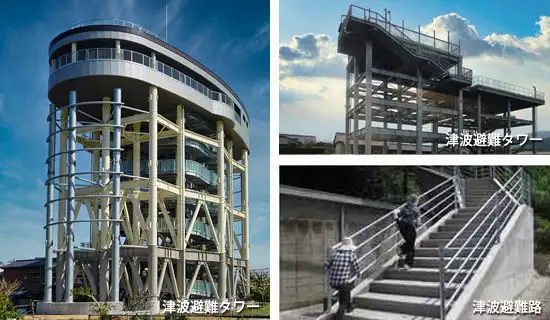
Residual risk to be infinitesimally zero
Certainly there are hazards that cannot be prevented. Trench-type earthquakes that occur in a cycle of about 100 years generate huge tsunamis with large tremors. In 2012, the Japanese Cabinet Office announced damage estimates for the largest possible Nankai Trough earthquake in the future. Kochi will be hit by the tsunami of 34.4m, the highest in Japan. It hits the entire coast and not only floods the center of the prefecture. In response to this announcement, the estimated number of fatalities is 42,000. This huge tsunami cannot be completely prevented. However, be able to challenge reduce the residual risks, can be save lives.
Kochi has accelerated and strengthened countermeasures against huge earthquakes. In all areas where inundation is expected, "evacuation facilities" were constructed at intervals that take into account the arrival time of the tsunami and the time that people can escape. The number of tsunami evacuation towers constructed was 114, and the number of evacuation routes leading to the hills was 1,445. Not only that, all measures have been taken across all sector and departments, and 282 action plans have been implemented.
As a result of these all-out measures against residual risk, the number of deaths currently expected has been reduced by 74% the first estimation by cabinet office in 2012 to 11,000. But it's not zero yet. Kochi's efforts continue today.

Made in Kochi Disaster
Risk Reduction and
Management Products
Disaster prevention products made by companies in Kochi, an advanced disaster prevention prefecture, Protecting and connecting the lives of people around the world.
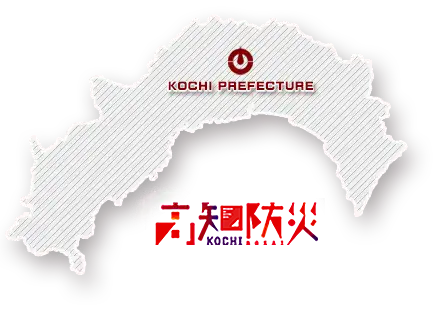
"Disaster Risk Reduction" is not something that should be handled only by government agencies.
In addition, government agencies alone cannot manage this crosscutting issues.
In order to keep active the saved lives and rebuild your life, it is important for each and every one of us to be prepared
and to take actions.
From the experience of the yearly heavy rains, typhoons, and the massive earthquakes that occur periodically, people and
companies in Kochi have created excellent Disaster Risk Reduction and management Products.
Disaster Risk Reduction and management Products developed in Kochi can be used all over the world, in your community,
at your home for contributing to reduce residual risks.



 OVERSEAS SALES with SHIPPING
OVERSEAS SALES with SHIPPING

